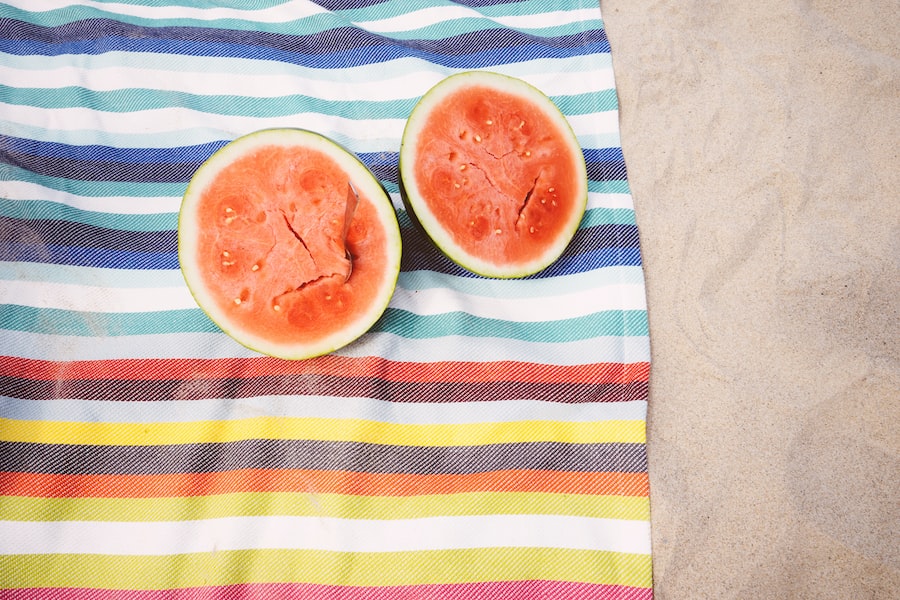Pansies in the Summer: How to Keep Them Thriving and Beautiful

Pansies are a popular choice for summer gardens due to their vibrant colors and delicate appearance. These flowers are known for their ability to thrive in cooler temperatures, making them a perfect addition to gardens during the summer months. However, like any plant, pansies require proper care and maintenance to ensure optimal growth and beauty.
Proper care for pansies in the summer involves understanding their ideal growing conditions, choosing the right soil, watering and fertilizing appropriately, pruning and deadheading, protecting against pests and diseases, and transplanting correctly. By following these guidelines, gardeners can enjoy the beauty of pansies all summer long.
Key Takeaways
- Pansies thrive in the summer with proper care and attention.
- Ideal growing conditions for pansies include full sun to partial shade and well-draining soil.
- Choosing the right soil for pansies in the summer is crucial for their growth and health.
- Watering and fertilizing pansies regularly in the summer is essential for optimal growth.
- Pruning and deadheading pansies regularly promotes healthy growth and prevents disease.
Understanding the Ideal Growing Conditions for Pansies
Pansies have specific temperature and sunlight requirements that must be met for them to thrive. These flowers prefer cooler temperatures between 45-65 degrees Fahrenheit (7-18 degrees Celsius). They also require at least 6 hours of direct sunlight each day. It is important to choose a location in the garden that provides these conditions.
In terms of soil, pansies prefer a slightly acidic to neutral pH level between 5.5-7.0. They also require well-draining soil to prevent root rot. If the soil in your garden is heavy or clay-like, it is recommended to amend it with organic matter such as compost or peat moss to improve drainage.
Air circulation is crucial for pansies as it helps prevent diseases such as powdery mildew. It is important to space pansy plants at least 6-8 inches apart to allow for adequate air circulation. This will also prevent overcrowding and competition for nutrients.
Choosing the Right Soil for Pansies in the Summer
Choosing the right soil for pansies is essential for their growth and health. Pansies prefer a loamy soil that is well-draining and rich in organic matter. Loamy soil is a combination of sand, silt, and clay, which provides a good balance of drainage and moisture retention.
Before planting pansies, it is important to prepare the soil by removing any weeds or debris. This will ensure that the pansies have access to nutrients and water without competition from other plants. Adding organic matter such as compost or well-rotted manure to the soil will improve its fertility and structure.
To maintain soil moisture and fertility throughout the summer, it is important to mulch around the base of the pansy plants. Mulch helps retain moisture in the soil, prevents weed growth, and adds nutrients as it breaks down. Organic mulches such as straw or wood chips are recommended for pansies.
Watering and Fertilizing Pansies in the Summer
| Watering and Fertilizing Pansies in the Summer | Frequency | Amount | Best Time |
|---|---|---|---|
| Watering | Once a week | 1 inch of water | Morning or evening |
| Fertilizing | Every 2-3 weeks | 1 tablespoon per plant | Early morning or late afternoon |
Proper watering and fertilizing are crucial for the health and growth of pansies in the summer. Pansies require regular watering to keep their soil moist but not waterlogged. It is important to water deeply, ensuring that the water reaches the roots of the plants. Watering in the morning or evening when temperatures are cooler will help prevent evaporation.
Fertilizing pansies is important to provide them with the necessary nutrients for growth and blooming. A balanced fertilizer with equal amounts of nitrogen, phosphorus, and potassium is recommended for pansies. It is best to apply fertilizer every 4-6 weeks during the summer months.
When applying fertilizer, it is important to follow the instructions on the packaging to avoid over-fertilization, which can lead to nutrient burn or damage to the plants. It is also important to monitor the pansies for signs of nutrient deficiencies such as yellowing leaves or stunted growth.
Pruning and Deadheading Pansies for Optimal Growth
Pruning and deadheading are important practices for maintaining the health and appearance of pansies. Pruning involves removing any dead or damaged leaves or flowers from the plants. This helps improve air circulation and prevents the spread of diseases.
Deadheading, on the other hand, involves removing spent flowers from the plants. This encourages the production of new blooms and prevents the pansies from going to seed. Deadheading also helps maintain the overall shape and appearance of the plants.
When pruning or deadheading pansies, it is important to use clean and sharp tools to avoid damaging the plants. It is also important to time these practices correctly. Pruning can be done throughout the summer as needed, while deadheading should be done regularly to encourage continuous blooming.
Protecting Pansies from Summer Pests and Diseases

Pansies are susceptible to a variety of pests and diseases during the summer months. Common pests that affect pansies include aphids, slugs, snails, and spider mites. These pests can cause damage to the leaves and flowers of the plants.
To prevent pest infestations, it is important to regularly inspect the pansies for signs of pests and take appropriate action if necessary. This may involve using organic pest control methods such as handpicking or using insecticidal soap.
Pansies are also prone to diseases such as powdery mildew, gray mold, and root rot. To prevent these diseases, it is important to provide adequate air circulation by spacing the plants properly. It is also important to avoid overwatering and to water at the base of the plants rather than overhead.
If signs of disease are detected, it is important to take immediate action to prevent further spread. This may involve removing infected plants or treating them with appropriate fungicides.
Tips for Properly Transplanting Pansies in the Summer
Transplanting pansies can be a delicate process, especially during the summer months when temperatures are higher. It is best to transplant pansies in the early morning or late afternoon when temperatures are cooler. This will help reduce transplant shock and give the plants time to adjust before the heat of the day.
When transplanting pansies, it is important to dig a hole that is slightly larger than the root ball of the plant. This will allow the roots to spread out and establish themselves in the new location. It is also important to handle the plants gently and avoid damaging the roots.
After transplanting, it is important to water the pansies thoroughly to help them settle into their new environment. It is also important to provide shade or protection from direct sunlight for a few days after transplanting to prevent wilting or sunburn.
Companion Planting with Pansies in the Summer
Companion planting involves planting different species of plants together to benefit each other. Pansies can be used as companion plants in the summer garden to attract beneficial insects such as bees and butterflies. They can also help deter pests such as aphids.
Suitable companion plants for pansies include marigolds, petunias, and snapdragons. These plants have similar growing requirements and complement the colors and textures of pansies. It is important to consider plant compatibility and growth habits when choosing companion plants.
Companion planting with pansies can not only enhance the beauty of the garden but also improve overall plant health and productivity.
Creative Ways to Display Pansies in the Summer
Pansies are not only beautiful in garden beds but can also be displayed creatively in containers, used in edible recipes, or incorporated into DIY projects.
Container gardening with pansies allows for flexibility in placement and design. Pansies can be planted in pots, hanging baskets, or window boxes to add color and interest to patios, balconies, or windowsills. It is important to choose containers with good drainage and use a well-draining potting mix.
Pansies are also edible flowers and can be used to add a pop of color to salads, desserts, or drinks. They have a mild, slightly sweet flavor and can be used whole or as individual petals. It is important to use only organically grown pansies that have not been treated with pesticides.
For those who enjoy DIY projects, pansies can be pressed and used in various crafts such as greeting cards, bookmarks, or framed artwork. They can also be dried and used in potpourri or sachets. The possibilities are endless when it comes to incorporating pansies into creative projects.
Enjoying the Beauty of Pansies All Summer Long
In conclusion, pansies are a popular choice for summer gardens due to their vibrant colors and delicate appearance. To ensure optimal growth and beauty, it is important to provide pansies with the ideal growing conditions, choose the right soil, water and fertilize appropriately, prune and deadhead regularly, protect against pests and diseases, transplant correctly, and consider companion planting.
By following these guidelines, gardeners can enjoy the beauty of pansies all summer long. It is important to experiment with different growing and display methods to find what works best for your garden. Above all, take the time to appreciate the beauty and versatility of pansies in the summer garden.



